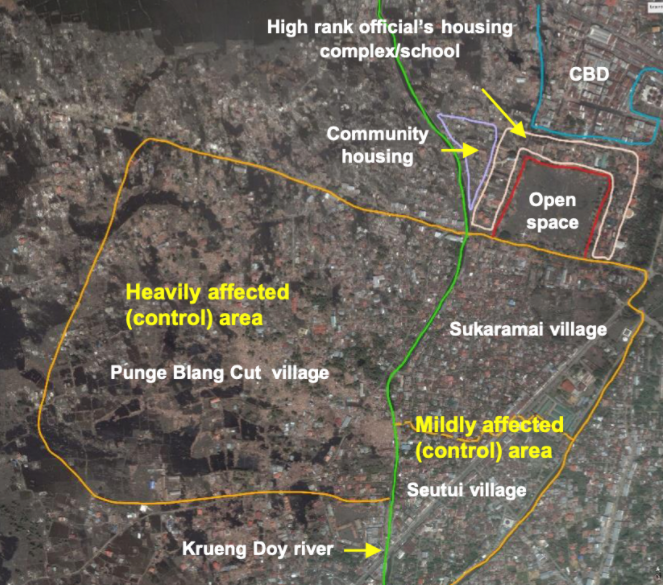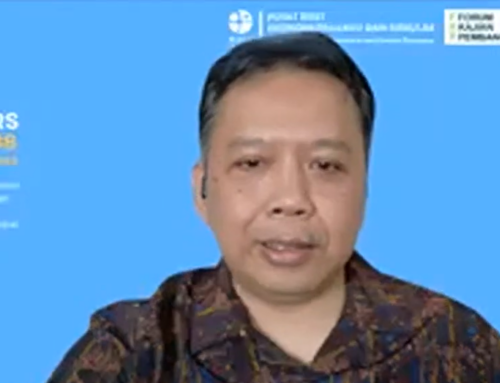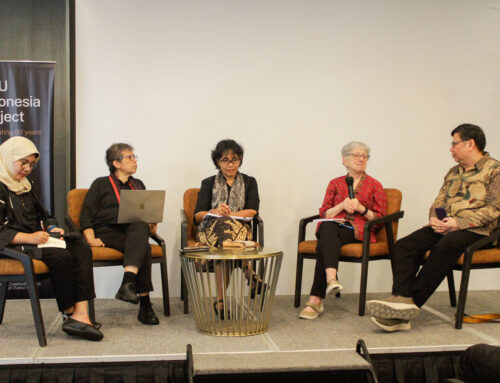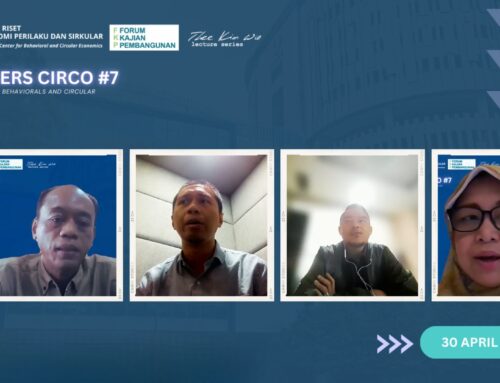 FKP hosted by ANU Indonesia Project with Riswandi (Universitas Syiah Kuala dan The Australian National University. Thursday, 12 August 2021.
FKP hosted by ANU Indonesia Project with Riswandi (Universitas Syiah Kuala dan The Australian National University. Thursday, 12 August 2021.
KEY POINTS:
- Exposure to natural shocks particularly in childhood can impair child development. Identification of the long-term effects of natural shocks is crucial to set relevant policies and implement early mitigation measures. This study employs a spatial regression discontinuity (RSD) design to identify the long-term effects of the 2004 tsunami on educational and health outcomes in adulthood. The survey area in Banda Aceh (Aceh Province) is an ideal setting for the Spatial RD because treated and control areas are in homogenous communities in adjacent locations but were differently affected by the tsunami. One area was protected from the severe impact of the tsunami by the natural barrier afforded by the Krueng Doy River.
- This study shows when they reached adulthood, children inhabiting the heavily devastated area tend to have from 0.5 to 1.3 less years of schooling, less likely to continue to higher education, and on average shorter by nearly 1.2 standard deviations than those living in the mildly affected area. Furthermore, children aged 6-12 years old at the time of tsunami living in the heavily affected area also tend to have higher prevalence of asthma and are more likely to be underweight.
SUMMARY
- Exposure to natural shocks particularly in childhood can impair child development. Support among children affected by natural shocks has not been a top priority in many developing countries. Therefore, identification of the long-term effects of natural shocks is crucial to set relevant policies and implement early mitigation measures. Riswandi from Universitas Syiah Kuala dan The Australian National University presents his paper on the long-term impact of the 2004 Indian Ocean tsunami on child development in Banda Aceh.
- In the 2011 Japan tsunami, there was a higher prevalence of overweight among preschoolers in affected regions, but no evidence of being underweight, one of the common health issues particularly in developing countries. In addition, several studies have been conducted in Indonesia to investigate the impact of the 2004 tsunami on human capital. Cas, et al. (2014) investigated the impact of parental death on the wellbeing of affected children. However, parental death may be endogenous, so may not infer causality. Another study by Frankenberg et al. (2017) investigated the impact of the tsunami on the height of children. However, the selection method could have a problem due to high mortality and thus may not establish causality. Through this study, Riswandi attempts to provide more robust causality evidence on the impact of a natural hazard on child development.
- This study employs a spatial regression discontinuity (RSD) design to identify the long-term effects of the 2004 tsunami on educational and health outcomes in adulthood. Regression Discontinuity (RD) design is a way of estimating treatment effects in a non-experimental setting where treatment assignment is determined by whether (or not) an observed variable exceeds a cutoff point. Theoretically, individuals just below the cutoff are a good comparison to those just above the cutoff. Spatial RD is a special case of RD that recognizes a geographic border as a cutoff point, and geographic distance represents the running variable.
- A Spatial RD is employed to estimate the causal effect of the tsunami by comparing outcome variables of respondents aged 0-12 years old at the time of the tsunami in heavily and mildly affected areas. The survey area is an ideal setting for the Spatial RD because treated and control areas are homogenous communities in adjacent locations but were differently affected by the tsunami where the Krueng Doy River acted as a barrier to the tsunami waves and saved the area behind is from severa destruction (as shown in the picture below).

- The results reveal that children inhabiting the heavily devastated area tend to have from 0.5 to 1.3 fewer years of schooling and are less likely to continue to higher education compared to the mildly affected areas. They are on average shorter by nearly 1.2 standard deviations than those living in the mildly affected area upon their adulthood. Furthermore, children aged 6-12 years old who lived in the heavily affected area at the time of the tsunami also tend to have a higher prevalence of asthma and are more likely to be underweight.
- These children in the older cohort also seem to have lower cognitive abilities. These cognitive distortions could be a possible channel that worsens educational outcomes in later life, which could lower the income upon their adulthood. This study provides a much stronger argument to further develop policies that could significantly help children affected by natural shocks in terms of their educational and health performances; including nutrient adequacy of the affected children after the disaster.




